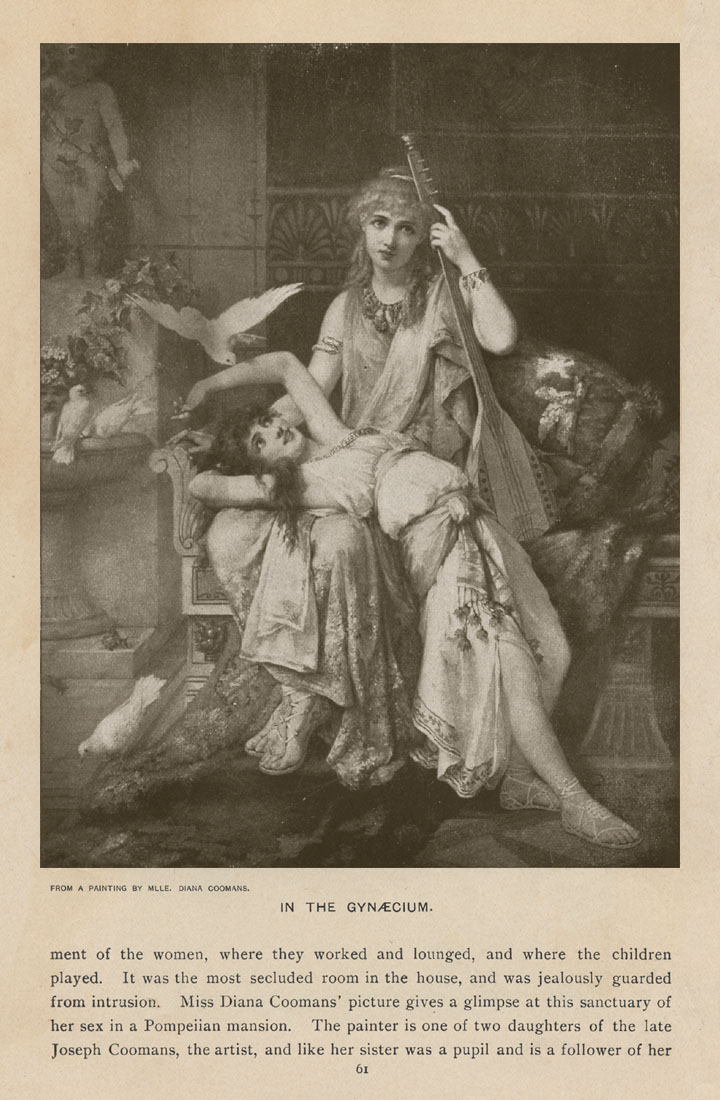In the Gynaecium, An Oil on Canvas Painting
By Diana Coomans, circa 1880
Signed Diana Coomans, Paris
22 in (57 cm) high, 18 in (46 cm) wide, framed
cf. Dupont Vicars, Master Paintings of the World, Chicago, 1902, p.61
Diana Coomans received training through her father, Joseph Coomans. He was one of the European painters most popular with American collectors, and the sale of his works in England alone made him a highly successful man. He was a native of Brussels and a pupil of Professor Hasselaere at Ghent, and of Nicaise de Keyser and Baron Wappers at the Antwerp Academy. From Antwerp he moved to Paris, and went with the French army to Algiers where he spent several years, later travelling extensively in Italy, Turkey, Greece and the Crimea. At this time he painted historical and portrait subjects but when he visited Italy in 1857, he became interested in the remains of ancient Pompeii, then being excavated. From this time onwards he took up the subjects that made him famous.
He had two daughters both of whom possessed remarkable artistic gifts and who, as his pupils, became well-known painters. Some years before his death he visited America, where he stayed for a prolonged period, accompanied by his daughters who became favorites in New York society. Diana painted the same subjects as her father, very much in his manner and with the same feeling for colour.
This painting gives a glimpse of how the artist imagines a woman's life in a Pompeian mansion, depicting an area of sanctuary where women could enjoy some seclusion. Other works by Diana Coomans can be found in the Canton Museum of Art.
He had two daughters both of whom possessed remarkable artistic gifts and who, as his pupils, became well-known painters. Some years before his death he visited America, where he stayed for a prolonged period, accompanied by his daughters who became favorites in New York society. Diana painted the same subjects as her father, very much in his manner and with the same feeling for colour.
This painting gives a glimpse of how the artist imagines a woman's life in a Pompeian mansion, depicting an area of sanctuary where women could enjoy some seclusion. Other works by Diana Coomans can be found in the Canton Museum of Art.













